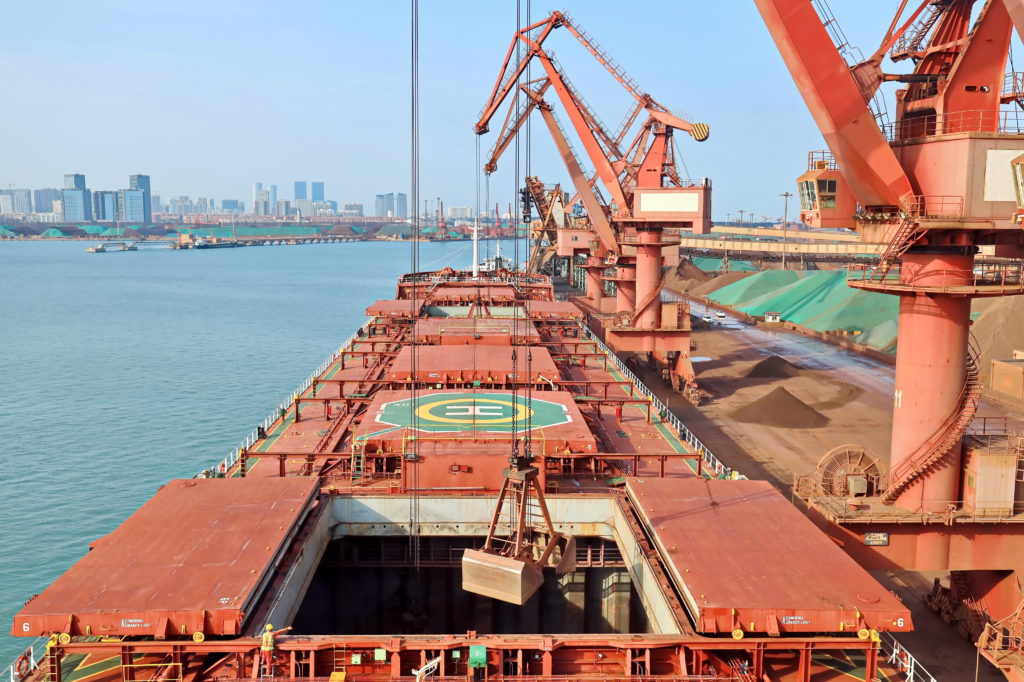Reuters | March 15, 2024 |

Stock image.
The tables have turned on iron ore with prices coming under pressure from a combination of fundamental and sentiment factors in dominant importer China that are likely to persist over the short term.

The price of Singapore Exchange iron ore contracts dropped to $110.05 a metric ton on Wednesday, the lowest close since Aug. 31 and down 23.4% from the peak so far in 2024 of $143.60, reached on Jan. 3.
The main domestic benchmark in China, the Dalian Commodity Exchange futures contract fell to 819.5 yuan ($114.04) a ton on Wednesday, a five-month low and down 19.2% from the peak so far this year of 1,014 yuan on Jan. 4.
On the fundamental side of the equation, there are signs that China’s strong appetite for imported iron ore the first two months of the year has moderated in March, and port inventories have swelled.
China, which buys more than 70% of global seaborne iron ore, is on track to import 99.62 million tons of the key steel raw material in March, according to data compiled by commodity analysts Kpler.
Imports may be lower than the Kpler estimate, with LSEG data pointing to arrivals of 91.4 million tons in March, which would be the weakest month since April last year.
Official customs data showed imports in the first two months of 2024 coming in at 209.45 million tons, up 8.1% from the same period in 2023, and giving a daily average of 3.49 million tons.
Even assuming the more optimistic Kpler data for March gives an expected daily import figure of 3.21 million tons, which would be 8% below the rate for the first two months.
One factor that is worth noting is that imports are likely dropping in March because of the high prices that prevailed for much of the first two months of the year, when cargoes arriving this month would have been arranged.
Iron ore in Singapore was still above $130 a ton on Feb. 16, and it is only since then that prices have moderated to the current level.

Stockpiles build
Another reason for the decline in imports is that China’s port inventories have been rising strongly in recent weeks, and are back to what are comfortable levels for this time of year by historic standards.
Stockpiles monitored by consultants SteelHome rose to 138.2 million tons in the week to March 8, up from 134.9 million the prior week.
They are now 31.7% higher than the 7-1/2-year low of 104.9 million tons hit in late October.
The current level of inventories is almost exactly the same as the 138.6 million tons recorded for the same week in March last year.
In addition to softer fundamentals, the iron ore market is being hurt by the worsening sentiment surrounding key parts of China’s economy, including the key residential property sector.
There are fears Beijing isn’t doing enough to stimulate the sector, which has been beset by problems including liquidity issues at major developers and waning interest among buyers.
While senior officials have said they will support the housing sector, it remains to be seen whether any new steps will prove effective.
Outside of construction there are also problems with manufacturing, with the official Purchasing Managers’ Index shrinking for a fifth month in February, coming in at 49.1 points, down from 49.2 in January, and staying below the 50-level that separates growth from contraction.
Overall, the outlook for China’s iron ore demand has darkened after the strong start to 2024, and it will likely take a sustained period of lower prices and improved sentiment to lift the clouds.
(The opinions expressed here are those of the author, Clyde Russell, a columnist for Reuters.)
(Editing by Lincoln Feast)
No comments:
Post a Comment